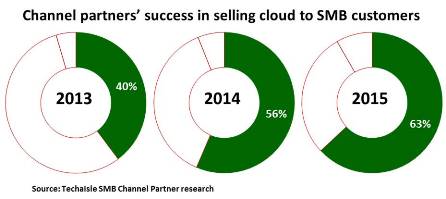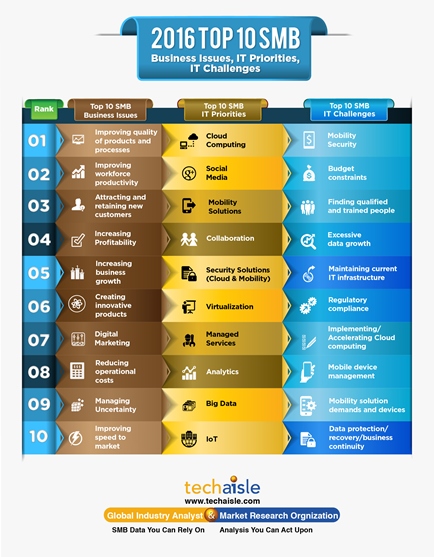For all the talk of a world predicated on software-defined resources, there is still need for capable, reliable, scalable physical infrastructure to support these software layers and the features and applications that sit atop them. The rise in virtualization has been driving an accompanying demand for converged infrastructure: products that combine processing, storage and networking into a robust and scalable unit that can support and respond to the options inherent in virtualization.
While the migration from separate server, storage and networking products to converged infrastructure is still in its early stages, the Techaisle SMB & midmarket converged infrastructure survey and corresponding Techaisle SMB & midmarket virtualization adoption trends survey shows that it is beginning to gain traction, especially within more sophisticated accounts. Data shows that 10% of small businesses and 27% of midmarket businesses (weighted data) are planning to adopt converged infrastructure. Current midmarket adoption rates for converged infrastructure are below findings for VDI but differences readily become apparent when analyzing the data from the lens of Techaisle’s segmentation by IT sophistication. Converged infrastructure adoption rises steadily with increased buyer sophistication in both the small and midmarket segments. As the market matures, we expect to see accelerated adoption of converged infrastructure across the SMB market.
What is driving converged infrastructure adoption?
While there are technical advantages that make converged infrastructure products more effective virtualization hosts than traditional servers, Techaisle’s research shows that SMB buyers adopt converged infrastructure for one or more of five primary reasons:
- to benefit from converged infrastructure’s integrated design and efficiency,
- to tap into its ability to enable centralization/management of resources,
- to capitalize on performance/time-to-benefit advantages,
- to improve IT agility and its ability to meet business needs, and
- in response to core requirements for cost savings and improved security.
Drilling down into the data Techaisle finds that core requirements inform many converged infrastructure strategies, and the benefits and efficiency of integrated solutions are also frequently cited as a driver of converged infrastructure adoption.



















